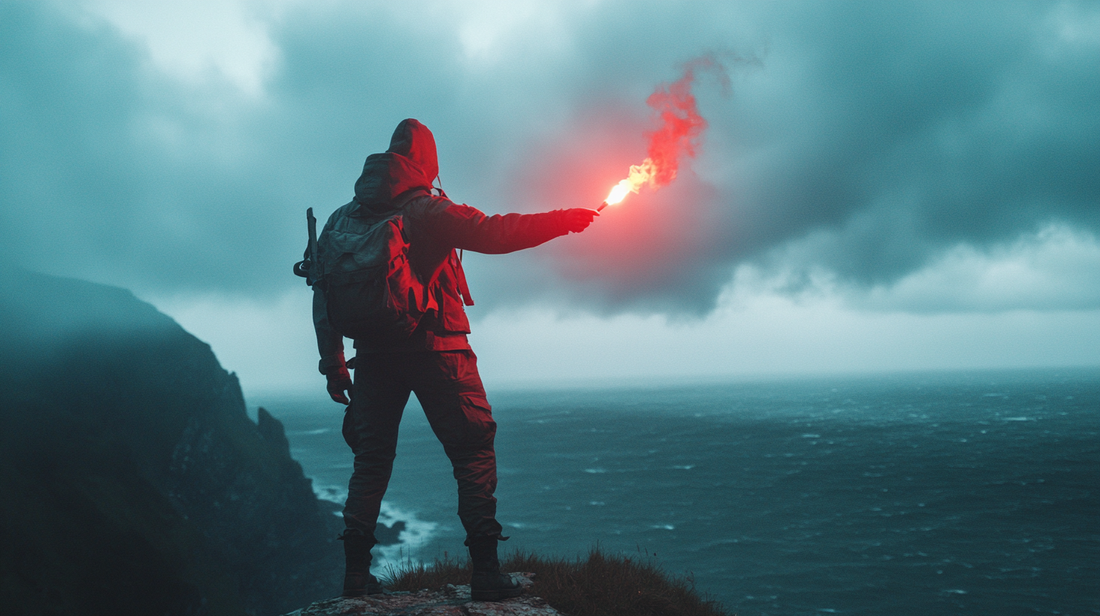
What to Pack in a Real Bug-Out Bag
Share
The 15 survival essentials that separate the prepared from the dead
There is no countdown when collapse happens. No one tells you this. You realize it too late, when the power is already out, the roads are jammed, and the stores are emptied. You do not get to go back. At that moment, your only chance is what you already have on you, and if your bug-out bag is weak, you are too.
Most kits sold online are made to look good in photos. Cheap plastic tools, expired food, fragile zippers. They are designed by marketers, not survivors. If you are building a real survival bag, one that might save your life or your child’s, then this is what it actually needs to contain.
These 15 items are not theories. They are what I packed for my own family, and every piece earns its place.
1. Tactical Backpack
Start with structure. You need a tactical-grade backpack, minimum 30L, with water resistance, chest and waist straps, compression zones, and multiple compartments. MOLLE webbing is a plus. This is your mobile base, and if the bag fails, everything in it becomes useless.
2. Water Filtration System
Without clean water, your countdown starts. You can survive three days without it, maybe, but the moment you lose hydration, decision-making goes to hell. Pack a Sawyer Mini or LifeStraw, and backup purification tablets. Add a metal container to boil or scoop from unsafe sources. Never assume access to bottled water.
3. Emergency Food Rations
This is not about luxury. It is about calories and shelf life. Choose compact, high-calorie options like Datrex bars or freeze-dried meals. Aim for 2,000 calories per person per day. Include a spork, a metal cup, and know how to eat silently. Hunger is weakness, and noise is a risk.
4. First Aid Kit
Not the plastic kind. Build a proper trauma kit. Include tourniquets, antiseptic, gauze, burn gel, painkillers, and gloves. Add blister pads, tweezers, and wound closure strips. You are your own medic until further notice. Bleed control is not optional.
5. Gas Mask or Respirator
Especially in urban or CBRN scenarios. Air becomes a threat quickly, whether from smoke, chemicals, or biological agents. Carry a compact respirator with P100 filters, or a full gas mask if you are in a high-risk zone. Seal it properly. Learn how to use it before it matters.
6. Tactical Knife or Multi-Tool
This is your most versatile item. A fixed blade can cut rope, split kindling, open packaging, and save your life. A multi-tool adds screwdrivers, pliers, and backup blades. Avoid junk steel. Choose gear that can take abuse without folding under pressure.
7. Fire Starting Tools
You need redundancy. Ferro rod, waterproof matches, stormproof lighter. Carry cotton balls soaked in petroleum jelly or a tinder pouch. Fire means warmth, light, food, signal, and psychological control. You do not want to be the one who fails to get it lit.
8. Emergency Shelter
Lightweight tarp, bivvy sack, or compact tent. Must set up in minutes and protect from wind, rain, and cold. Add paracord, stakes, and learn basic knots. Your shelter is your boundary. If you sleep exposed, you risk everything.
9. Thermal Blanket or Sleeping System
Space blankets are not enough. Carry a proper thermal layer, sleeping bag, or insulated bivvy. Hypothermia can strike above freezing. If you are wet, tired, and hungry, your body will quit faster than you expect.
10. Flashlight or Headlamp
You need to see and stay unseen. Go for high-lumen, low-profile gear. Headlamps free your hands, and red-light mode preserves stealth. Bring extra batteries or a solar charger. Darkness is a predator. You do not want to be blind when it arrives.
11. Power Bank or Solar Panel
When the grid fails, you have to generate your own energy. Choose a rugged power bank with at least 10,000mAh, or a solar charger that works in low light. Power means comms, navigation, and light. Keep it charged. Keep it dry.
12. Paracord or Survival Cordage
There are fifty uses for cordage. Shelter, hauling, first aid, restraint, traps. Paracord weighs nothing and saves lives. Pack at least 20 feet. If you want more, wrap it around your bottle or carry it as a bracelet. Never underestimate what rope can solve.
13. Compact Cooking Gear
A metal cup or mess kit, solid fuel tabs, folding stove. Not for gourmet meals. For boiling water, melting snow, or heating food in freezing wind. Even in short-term emergencies, warm food keeps morale alive.
14. Navigation Tools
A phone will fail. A compass, paper map, and GPS backup are smarter. Know your routes, exits, and choke points before it matters. Mark water sources, fallback zones, and alternate paths. If you get turned around, the clock starts ticking.
15. Gloves, Mask, and Eye Protection
One bad cut or blown eye and you are out of the fight. Gloves protect from broken glass, rope burn, or cold. Safety glasses shield you from wind, dust, and debris. A backup mask filters air when the first one fails.
Final Word
A real bug-out bag is not built in five minutes. It is not an accessory. It is your line between being a victim and staying in control. Every piece inside should be there because you tested it, trusted it, and know what it can do.
Build for what happens, not what looks good. Your survival gear is not decoration.
It is your exit plan. Make it count.
